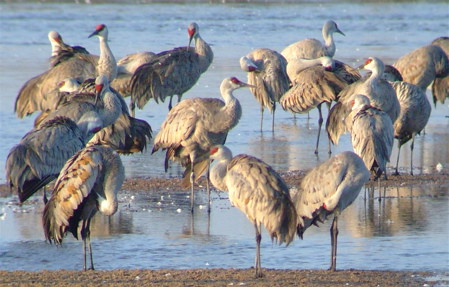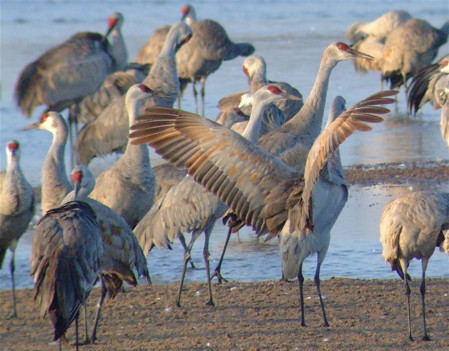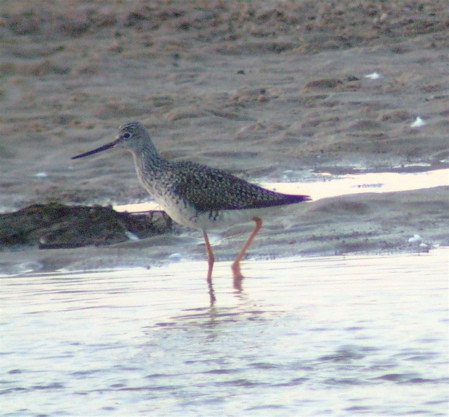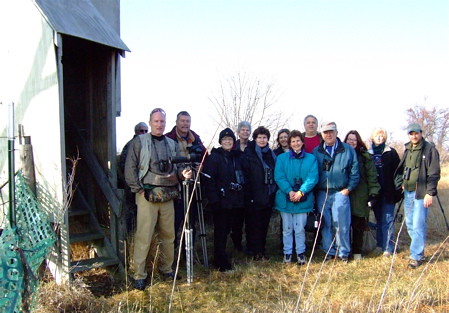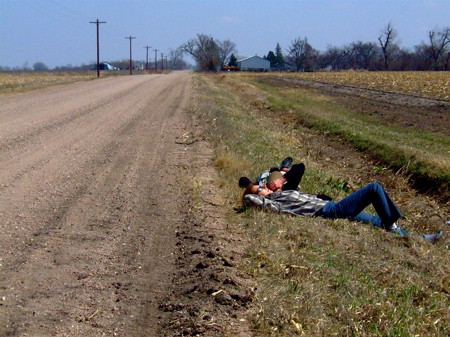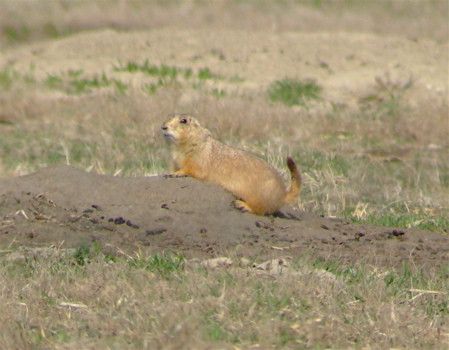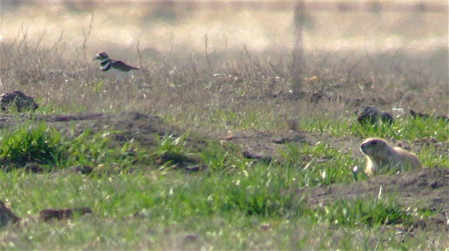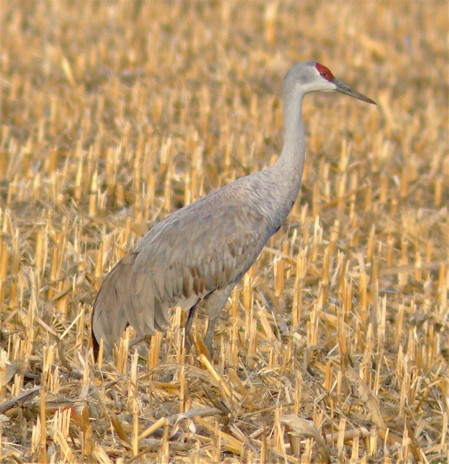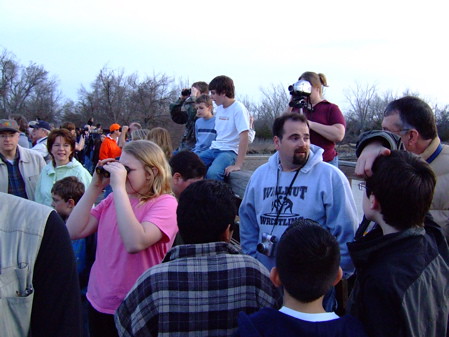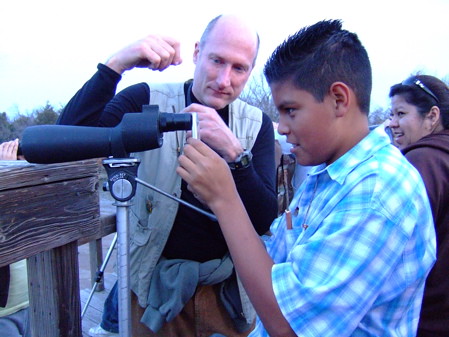So, Friday morning our group went to a crane blind at Rowe Sanctuary. They were kind enough to give our group our own blind that holds about 16 people so our group of 13 fit right in. It was a two story blind, people upstairs got to kind of look down on the cranes, while those on the floor got a head on view. I was on the bottom floor, above is the view from the window.
Here is the view of the cranes through the scope. The sandhill cranes use the Platte River as a roosting area at night during their spring migration. Our group watched about 17,000 - 20,000 cranes hanging outside of our blind.
During spring migration, cranes will paint themselves with mud, giving their feathers a rusty appearance. You can see on the bird above with wings outstretched, that it has already gotten underway in painting its plumage.
You do see some other birds on the river, like this greater yellowlegs pictured above. I'm calling this a greater yellowlegs because it was larger than the killdeer running around and because when it called it said, "you you you". Generally, lesser yellowlegs will only give a single "you" or a double "you you", while greater will give three or more. If you're Kevin Karlson, I'm open to other options on the id.
We also heard a great horned owl calling outside the blind. I did see a few red-winged blackbirds and wondered why they even bothered singing on territory since the din of 17,000 cranes tended to drown out their song.
Normally at a crane blind you sit in there for about an hour and a half to two hours and then they all fly off at once--a big noisy lift off and you can leave the blind. The cranes Friday morning were total slackers and we were there almost three hours and no lift off. Our volunteer guides let us vacate the blind and we thought the cranes would take off, but they didn't. Don't get me wrong, it was still very cool, but I was hoping our group would get to experience watching the several thousand cranes take off at once. Ah well, another adventure for another day.
The weather was absolutely gorgeous and I suspect the cranes we were watching were planning to take off and head north on Friday, so perhaps they were getting in a touch more rest? By mid afternoon the cranes were catching thermals overhead and the easiest way to watch them was to just lay on the ground. Temperatures in the sixties, bright sun, cranes flying overhead--what a great way to spend an afternoon.
Nebraska is still fairly dry and we had a tough time finding waterfowl in potholes as compared to previous years, but a visit to Prairie Dog Waterfowl Production area proved some great entertainment. We found loads of prairie dogs and some distant waterfowl including snow geese, pintails, shovelers, and greater-white fronted geese. Stan gave a great talk on prairie dogs and tried to get them to bark. All he got was the disapproving look above--I felt surprisingly at home.
There were quite a few killdeer running around amongst all the mounds. They both look so distrusting. I guess they have good reason--well, at least the prairie dog does. It's hard to find love for prairie dogs among ranchers. I don't know what the killdeer's excuse is.
One of the tour participants said that she was having a tough time getting a photo of a single crane. After going through my photos, I had to agree with her. I have the above shot thanks to some cropping. I took this shot on our way to Fort Kearney. We were going to the bridge to watch the cranes fly in.
The bridge was packed. Some of our group was there on Thursday and not many people were around, but Friday night the Kearney night life came out. Above is a group from a local school who are part of an after school/outdoor club. This trip had some fishing and crane watching.
One of the really fun and cool things about this group was the willingness to share bird information and to corrupt Nebraska youth towards birding. I let the kids borrow my binoculars and look through my scope. The guy pointing towards me is Howard, a tour participant who let the kids look through his scope.
Wow, I thought I was trendy with the digiscoping, but here Howard is helping a youth photograph cranes with a cell phone through his scope. Now that, my friends, is high tech. The kids got some great veiws of the cranes thanks to our optics. I'm grateful the local schools have these outdoor programs and hope the kids know how lucky they are to grow up with multitudes of cranes every spring. They seemed really excited.


